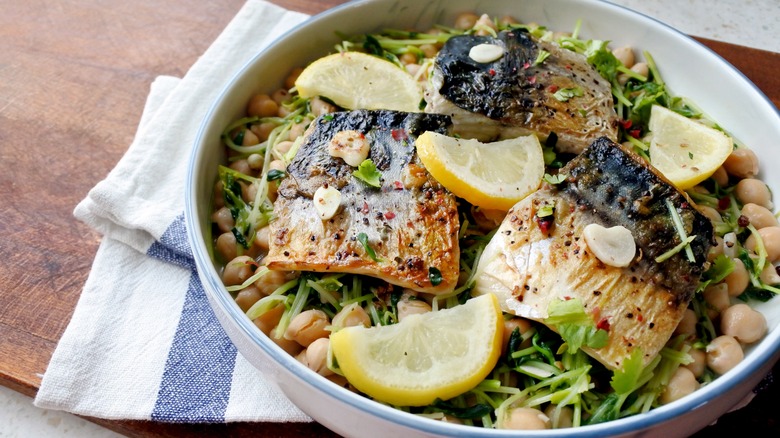Canned Coconut Milk Delivers Rich, Creamy Results When Braising Fish
It's hard to think of a fruit as versatile as the coconut. A staple in the diets of the global majority, coconuts can be transformed into everything from mango sticky rice to coconut cream pie. There are a variety of creative ways to use a whole coconut, but one of our favorite methods will always be to use coconut milk when cooking.
The creamy liquid is used as a base for curries, soups, and stir-fries. It can also be used as a sauce to top off meat and seafood, but sometimes a drizzle of sweetness isn't enough. Rather than making a sauce or glaze for your dishes, infuse the flavor of coconut into your food by braising it.
Coconut milk works especially well with fish, as it gives it a moist, creamy texture. To braise the fish, you'll need to quickly fry it and then let it simmer slowly in the sauce, soaking up the flavor. The result? A tender, juicy fish with a slightly flaky coating.
How to braise fish in coconut milk
Opt for fish that won't fall apart easily while being braised in coconut milk – salmon, halibut, or even shrimp work especially well. Braised coconut cod sounds divine, but it's prone to falling apart, so cook with caution. With your fish completely dry, heat oil in a pan and sear both sides quickly. Set it aside and add your choice of spices to the pan.
Rich spices, like cardamom, cinnamon, turmeric, cloves, and nutmeg, are always a good choice when cooking with coconut milk. However, if you want the dish to have more of a fresh taste, go for basil, lemongrass, mint, and thyme. Add in your spices, alongside garlic cloves, grated ginger, and onion, and allow them to heat up in order for the flavor to discharge.
After a few minutes of stirring the spices and aromatics, pour the coconut milk into the pan. Put the fish back in and turn down the temperature to a low heat. Cover and allow the fish to slowly cook for about 15 minutes, or until the fish is cooked and the sauce has started to dry up. You can also add in greens like kale or spinach at the tail end for creamy, tender veggies.

